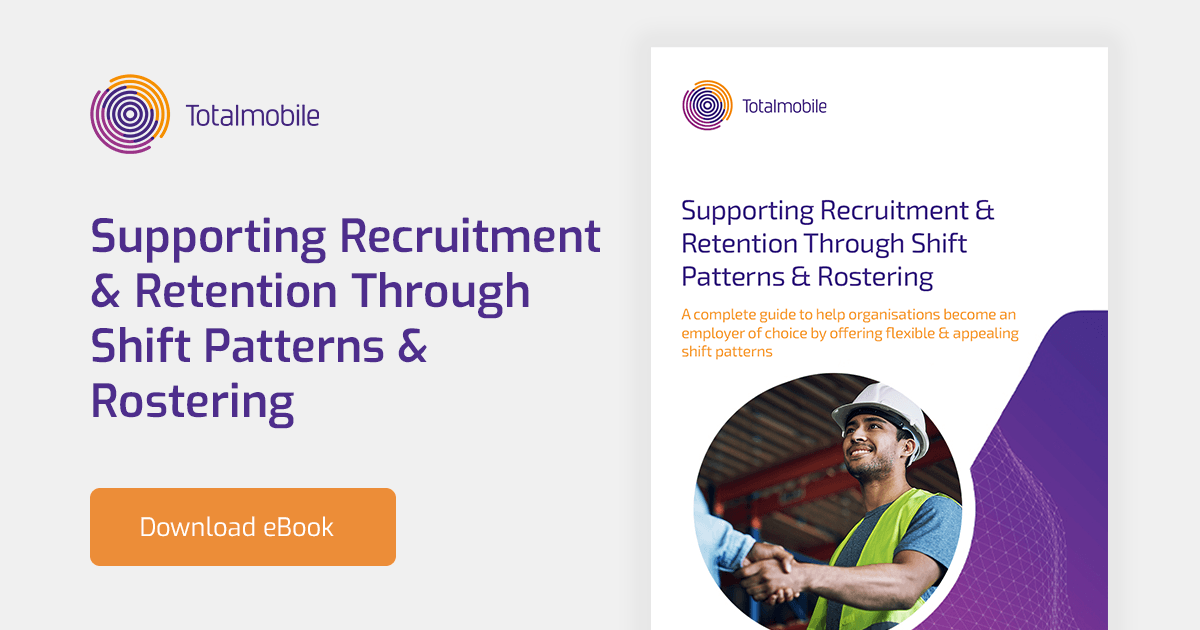
Employee Attraction & Retention
It’s late 2022, and we’re probably tired of hearing about ‘The Great Resignation’ and ‘Quiet Quitting’. But with employee retention, the phrase “no smoke without a fire” rings true, especially when dealing with large mobile workforces. Bupa UK has identified the everyday negative habits driving top talent away, harming employee well-being and degrading one’s status as an employer of choice. These negative factors negatively impact employee well-being, including micromanagement, lack of recognition, and poor workplace culture. It has never been more challenging to attract and retain the best talent for your company than it is today.
Aside from pay, hours worked present the most integral factor in overall job satisfaction. Often, an organisation’s approach to shift work and rostering doesn’t consider this, leading to working practices that harm recruitment and retention. Building a desirable employer brand plays a huge role in attracting top talent — but it can also drive that talent away from your company if the procedures in place fail to match expectations.
Negative Shift Pattern & Rostering Practices
Our rostering experts have helped many organisations adopt best practices and technology; we’ve even written a blog highlighting top tips for implementing shift patterns and rostering that boost your employer brand. The five most common shift planning and rostering mistakes they see are:
1. Inflexibility
Employees, particularly those entering the workforce, are looking for more flexibility and control over their working hours. Many businesses operate with rigid legacy shift patterns that don’t match varied demands or employee aspirations. These typically lead to high levels of overtime and limit the appeal to diverse demographics.
2. Overworking
A recurring theme in shift planning and rostering are practices that lead to sustained high levels of overtime and regular breaches of Working Time Regulations. Long hours not only harm morale, performance and productivity but can lead to the sort of Health and Safety issues which can threaten the well-being and damage an organisation’s reputation.
3. Short notice changes
Many employers give staff very little notice of changing shifts and cancellations. This lack of certainty negatively impacts people’s work-life balance, making leisure and family time hard to plan. Short notification is highly disruptive to personal lives and can lead to uncertainty and precariousness among employees, impacting mental health and job satisfaction.
4. Low engagement
Employer brand suffers when employees feel disempowered and unable to influence something as important as working hours. Changing shift patterns is a sensitive area that requires best practice approaches to avoid disruption and damage to your employer brand.
5. A lack of autonomy
Employees value having agency and control. We often see negative sentiment when processes such as holiday booking and shift swaps are slow and lack transparency or fairness. Rostering systems and processes should provide enhanced control over working and home lives.

So what conclusions can we draw?
Ultimately, avoiding these five typical shift pattern and rostering mistakes will safeguard your employee retention rates. High retention rates signify internally and externally that a team is engaged, motivated, performing well, and providing the best customer service. Employees who care most about the company’s vision and mission typically feel greater fulfilment in their roles and demonstrate more commitment to their jobs.
High retention rates will reduce employee churn—churn, of course, has a devastating effect on a company’s bottom line. On average, six to nine months’ salary of an equivalent employee gets spent on replacing them. However, this financial blackhole associated with churn is not solely why organisations want high retention rates.
The time and effort managers expend addressing attrition takes time out of their day otherwise spent on their job where they should be focused. Naturally, increasing retention reduces time lost.
High turnover also hurts employee morale and is a gateway to widespread burnout. Field technicians can become overworked due to the increased workloads, travel and responsibilities that workers must take on until roles are filled. Even newly hired employees experience low morale as they quickly push to learn their new position and plug the productivity gap.
Overcoming Employee Retention & Attraction Challenges
Considering all these points, maximising employee retention and having a desirable employer brand should be a top priority for field service organisations. You’ll be pleased to know our rostering experts are on hand, ready to help you design optimised shift patterns and implement the software to manage them effectively. This conversation is the first step in enhancing your employee experience and creating an employer brand that attracts and retains the top industry talent. Talk to our experts using the link below or download our Supporting Recruitment & Retention Through Shift Patterns & Rostering eBook on the left.








